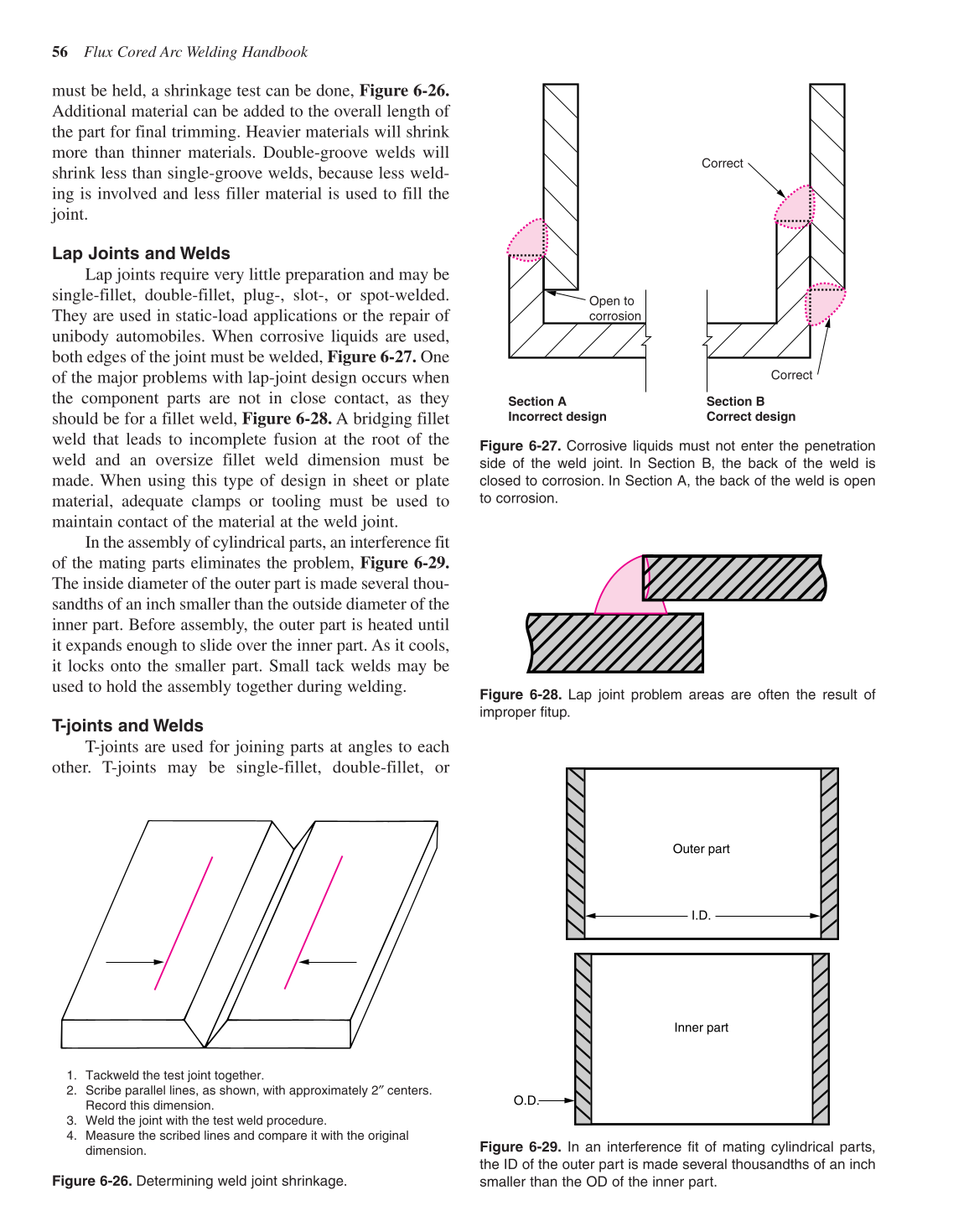must be held, a shrinkage test can be done, Figure 6-26.
Additional material can be added to the overall length of
the part for final trimming. Heavier materials will shrink
more than thinner materials. Double-groove welds will
shrink less than single-groove welds, because less weld-
ing is involved and less filler material is used to fill the
joint.
Lap Joints and Welds
Lap joints require very little preparation and may be
single-fillet, double-fillet, plug-, slot-, or spot-welded.
They are used in static-load applications or the repair of
unibody automobiles. When corrosive liquids are used,
both edges of the joint must be welded, Figure 6-27. One
of the major problems with lap-joint design occurs when
the component parts are not in close contact, as they
should be for a fillet weld, Figure 6-28. A bridging fillet
weld that leads to incomplete fusion at the root of the
weld and an oversize fillet weld dimension must be
made. When using this type of design in sheet or plate
material, adequate clamps or tooling must be used to
maintain contact of the material at the weld joint.
In the assembly of cylindrical parts, an interference fit
of the mating parts eliminates the problem, Figure 6-29.
The inside diameter of the outer part is made several thou-
sandths of an inch smaller than the outside diameter of the
inner part. Before assembly, the outer part is heated until
it expands enough to slide over the inner part. As it cools,
it locks onto the smaller part. Small tack welds may be
used to hold the assembly together during welding.
T-joints and Welds
T-joints are used for joining parts at angles to each
other. T-joints may be single-fillet, double-fillet, or
56 Flux Cored Arc Welding Handbook
Figure 6-26. Determining weld joint shrinkage.
1. Tackweld the test joint together.
2. Scribe parallel lines, as shown, with approximately 2″ centers.
Record this dimension.
3. Weld the joint with the test weld procedure.
4. Measure the scribed lines and compare it with the original
dimension.
Figure 6-27. Corrosive liquids must not enter the penetration
side of the weld joint. In Section B, the back of the weld is
closed to corrosion. In Section A, the back of the weld is open
to corrosion.
Section A
Incorrect design
Section B
Correct design
Correct
Correct
Open to
corrosion
Figure 6-28. Lap joint problem areas are often the result of
improper fitup.
Figure 6-29. In an interference fit of mating cylindrical parts,
the ID of the outer part is made several thousandths of an inch
smaller than the OD of the inner part.
Outer part
I.D.
Inner part
O.D.
